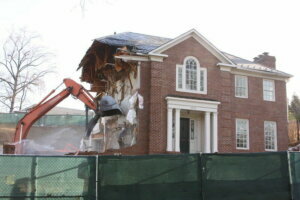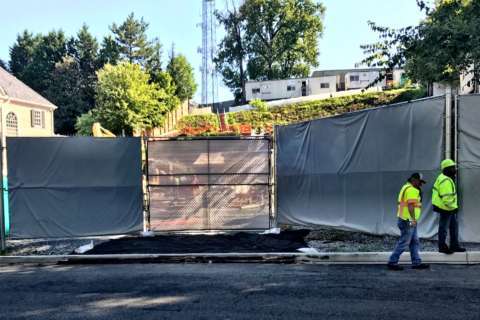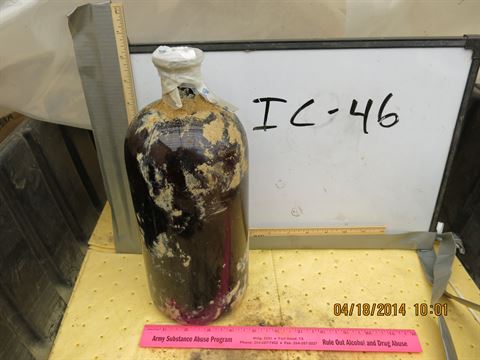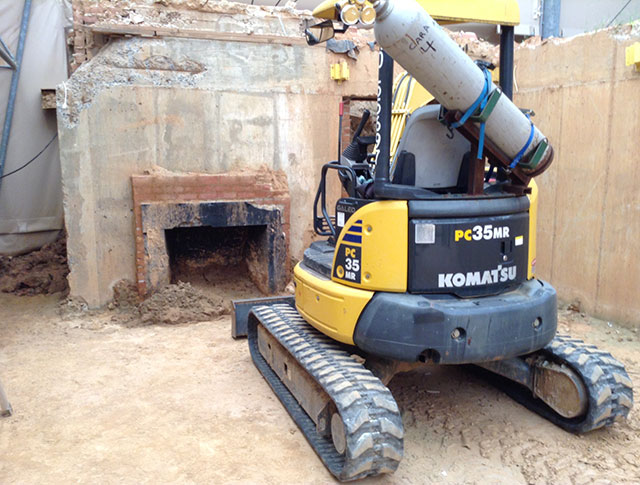The peaceful serenity of the neighborhood surrounding the stately home at 4825 Glenbrook Road, in the Spring Valley section of Northwest D.C., was matched by the potential danger and uncertainty of chemical agents buried beneath it.
Almost eight years since heavy machinery knocked down the first bricks of the home that had been built atop a World War I chemical weapons testing and disposal site — known as the American University Experiment Station — the painstaking cleanup of what’s been called the “mother of all toxic dumps” is entering its final stages.
U.S. Army Corps of Engineers spokesman Christopher Gardner told WTOP that only two small areas remain to be excavated on the property, after tons of contaminated soil and broken glassware with traces of potentially dangerous chemicals have been removed.
“At this point, we’re down to saprolite,” Gardner said. “For all intents and purposes, we’re scraping rock.”

The Spring Valley project began in 1993, when a contractor unearthed buried military ordnance on nearby 52nd Court Northwest. Digging and research indicated the likely presence of mustard gas and lewisite — an arsenic-containing blister agent — under the former home.
In March 2012, after testing of the property between 2007 and 2010, the decision was made to remove the home.
Starting in 2013, the Army Corps of Engineers began excavating under the home’s foundation. The work was done under a huge high-tech enclosure, which prevented chemicals from escaping into the neighborhood.
“You could compare it to peeling off the layers of an onion,” Gardner said about the process in which thin layers of dirt were skimmed off.
Over the years, there have been some temporary setbacks. In 2017, seven workers were sickened and temporarily hospitalized during the cleanup.
“We immediately stopped work, sought out outside opinions, and set up a board to investigate what happened,” Gardner said. “We adjusted our procedures appropriately to ensure that we didn’t have something like that again.”
After the final bit of scraping, the Corps will do confirmation sampling to ensure the removal of the contaminants.
And, after filling in and doing basic landscaping at the site, it will be we returned to its current owner, American University, perhaps by autumn.
“For the person walking by, it’ll be a grassy slope up from the curb. Then, a little plateau, and then a grassy slope will continue up the rest of the way up to the university behind it,” Gardner said.
American University has not said what it intends to do with the property, which is located next door to the president’s official residence.
“We’re thankful for the neighborhood’s patience,” Gardner said. “We’ve done our best to keep safety at the forefront throughout this process, to keep the community and our crew safe — it’s been the top priority throughout.”
Gardner said the Glenbrook Road project cleanup has cost roughly $60 million.









